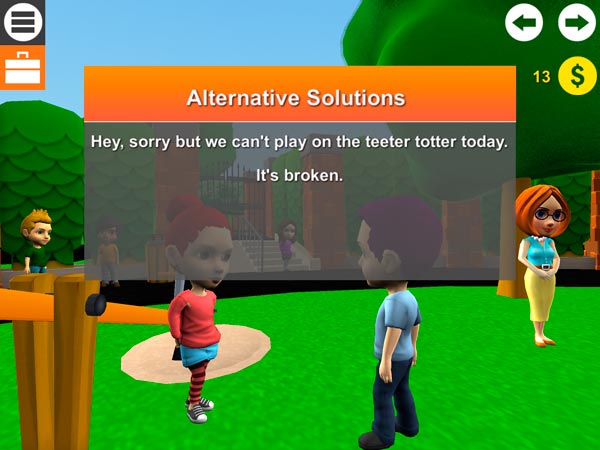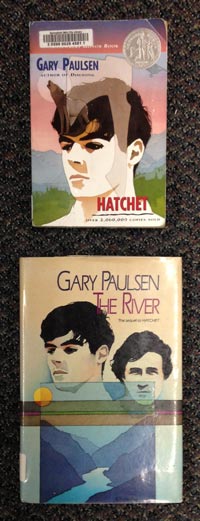Menu
-
- Home
-
About Us
-
The Approach
-
Linking Language & Literacy
-
MindWing Learning
-
Learning Resources
-
SHOP
-
Blog
-
- About MindWing
- Our People
- Contact Us
- Your Account
- Login
-
Spain (EUR €)


Tech Tuesday: Tech Tie-Ins to Autism Awareness Month
April 19, 2016 1 Comment

For this month’s Technology Tuesday, I wanted to spin off of the previous post and mention new resources relating to the themes of a few of these posts from the MindWing archives. So here is some commentary and additional tools relating to four of our back catalog of posts relating to language learning in the population of students with autism spectrum and related disorders. Aligning SGM® with The Zones of Regulation, and Tech-Tie-Ins! This post described the key connections between Story Grammar Marker® and Leah Kuypers’ wonderful and extremely useful Zones of Regulation curriculum. In the post, resources such as Pic Collage were mentioned for making visuals elaborating on emotional vocabulary associate with each Zone, and YouTube Kids for locating video scenes to assist students in identifying Zones and “Triggers” (essentially Kick-Offs) in others...

Additional Activities for “The River”
April 12, 2016
 For those of you who own a copy of the ThemeMaker Teachers' Manual, you know that one of the novels featured is The River by Gary Paulsen. This novel is a sequel to Hatchet. The River is an excellent book for exploring character development. I recently came across my folder for The River and thought I would share a few additional activities with you before putting it away. One of our sixth grade teachers, Donna Mulligan and I collaborated to present this reading adventure to our students. Six students in her class were on educational plans for reading, two for decoding and comprehension, the others for comprehension skills only. Since all the students had knowledge of and had used the SGM® for several years, it provided the needed scaffolding to support students within the classroom. This also made it easier for flexible groupings of students as the SGM® was so familiar to all and a common language was already established among all participants...
For those of you who own a copy of the ThemeMaker Teachers' Manual, you know that one of the novels featured is The River by Gary Paulsen. This novel is a sequel to Hatchet. The River is an excellent book for exploring character development. I recently came across my folder for The River and thought I would share a few additional activities with you before putting it away. One of our sixth grade teachers, Donna Mulligan and I collaborated to present this reading adventure to our students. Six students in her class were on educational plans for reading, two for decoding and comprehension, the others for comprehension skills only. Since all the students had knowledge of and had used the SGM® for several years, it provided the needed scaffolding to support students within the classroom. This also made it easier for flexible groupings of students as the SGM® was so familiar to all and a common language was already established among all participants...

Autism Awareness & SGM®: 31 FREE RESOURCES
April 05, 2016 1 Comment
In recognition of Autism Awareness Month, we would like to share with you 31 Blog Posts, Free Lessons, Webinars and Videos that focus on social communication which can be used to help children along the Autism Spectrum. The themes in these blogs/lessons/videos/webinars are perspective-taking, social problem solving, critical  thinking, social emotions, theory of mind, story-telling and more! In addition to these FREE resources, for the month of April our Autism/Social Communication Collection is $50 OFF! The sale price is $99.95 for the whole collection (normally $149.95)! We want to give you the chance to use this kit of materials with the population of students who can benefit from it most...
thinking, social emotions, theory of mind, story-telling and more! In addition to these FREE resources, for the month of April our Autism/Social Communication Collection is $50 OFF! The sale price is $99.95 for the whole collection (normally $149.95)! We want to give you the chance to use this kit of materials with the population of students who can benefit from it most...

Another Classic: Dr. Seuss’ The Sneetches
March 21, 2016
 A previous blog (“Read Across America Day and Dr. Seuss Lesson,” 2/29/16) focused on the biography about Dr. Seuss. One of his selections mentioned was The Sneetches, published in 1961. Written during the 1960s during the civil rights struggle, this book demonstrates conflict between star-bellied Sneetches and those Sneetches who did not have stars. In a biography, it was stated that Ted Geisel showed through this story how he thought it was silly for people “to hate one another because they looked different” (p. 81, Who Was Dr. Seuss? by Janet Pascal). Below find The Sneetches outlined using five of the seven SGM Developmental Stages...
A previous blog (“Read Across America Day and Dr. Seuss Lesson,” 2/29/16) focused on the biography about Dr. Seuss. One of his selections mentioned was The Sneetches, published in 1961. Written during the 1960s during the civil rights struggle, this book demonstrates conflict between star-bellied Sneetches and those Sneetches who did not have stars. In a biography, it was stated that Ted Geisel showed through this story how he thought it was silly for people “to hate one another because they looked different” (p. 81, Who Was Dr. Seuss? by Janet Pascal). Below find The Sneetches outlined using five of the seven SGM Developmental Stages...

Spring Stories — The Legend of The Indian Paintbrush
March 18, 2016
 The Legend of The Indian Paintbrush (Legends Series) by Tomie dePaola
The Legend of The Indian Paintbrush (Legends Series) by Tomie dePaola
The following synopsis is taken from Goodreads
In spring, the hills and meadows of Texas and Wyoming are ablaze with the reds, oranges, and yellows of the Indian Paintbrush. How this striking plant received its name is told in an old Indian legend. Many years ago, when the People traveled the Plains, a young Indian boy had a Dream-Vision in which it was revealed that one day he would create a painting that was as pure as the colors of the evening sky at sunset. The boy grew up to become the painter of the tribe, but although he found a pure white buckskin for a canvas and made paints from the brightest flowers and the reddest berries, he could not capture the sunset...

A Leprechaun Lesson for St. Patrick’s Day with Story Grammar Marker®
March 14, 2016

Cead Mile Failte (A Hundred Thousand Welcomes)!
I always enjoy trickster tales and have been amazed at the discussion and enthusiasm that these tales elicit from children. The tales from this folktale genre exists worldwide. So, with this in mind and St. Patrick’s Day on the horizon, I thought it would be fun to look at books involving leprechauns, those mischievous fairies from Irish folklore. A brief trip to my local library in Springfield, Massachusetts, netted many books sure to put a smile on your student’s face! One such tale is Clever Tom and the Leprechaun. Here is a link to a YouTube video of a reading of the book. I would begin by reviewing two words in the title: clever and leprechaun...

 The Legend of The Indian Paintbrush (Legends Series) by Tomie dePaola
The Legend of The Indian Paintbrush (Legends Series) by Tomie dePaola